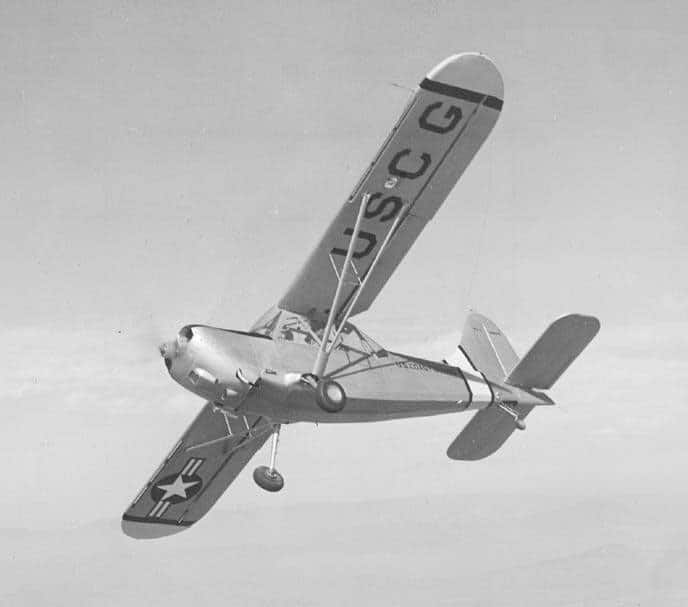 The history of the United States Coast Guard extends back to the founding of the Republic. One of the acts of the first Congress was to establish protective tariffs to generate revenues for the new nation. To enforce these tariffs Congress authorized the formation of a Revenue Cutter Service. Congress authorized the merger of the Revenue Cutter Service with the Lifesaving Service on January 28, 1915, and the Coast Guard was officially formed two days later. The mission responsibilities of the Coast Guard have increased dramatically but law enforcement has remained one of the primary functions throughout the years. Some law-enforcement operations are direct and others were in support of other bureaus within the Treasury Department as well as other government agencies. The Coast Guard remained under the Treasury Department until 1967, when it became part of the newly formed Department of Transportation. It transferred to the Homeland Security Department in 2002. Law enforcement duties have been and remain a primary function of the Coast Guard.
The history of the United States Coast Guard extends back to the founding of the Republic. One of the acts of the first Congress was to establish protective tariffs to generate revenues for the new nation. To enforce these tariffs Congress authorized the formation of a Revenue Cutter Service. Congress authorized the merger of the Revenue Cutter Service with the Lifesaving Service on January 28, 1915, and the Coast Guard was officially formed two days later. The mission responsibilities of the Coast Guard have increased dramatically but law enforcement has remained one of the primary functions throughout the years. Some law-enforcement operations are direct and others were in support of other bureaus within the Treasury Department as well as other government agencies. The Coast Guard remained under the Treasury Department until 1967, when it became part of the newly formed Department of Transportation. It transferred to the Homeland Security Department in 2002. Law enforcement duties have been and remain a primary function of the Coast Guard.
In 1948 the Coast Guard was called upon to provide aviation support for agents of the Treasury’s Alcohol Tax Unit. The Alcohol Tax Unit (ATU) was established within the Internal Revenue Service (IRS) in 1934. The unit administered internal revenue laws that governed the alcohol industry after the end of Prohibition. In 1951, the IRS transferred tobacco tax functions to ATU and renamed the unit Alcohol and Tobacco Tax Division.
On 1 July 1972, these tax and regulatory functions were separated from the IRS when the Treasury Department created the ATF.
In order to avoid detection, the manufacture of illicit whiskey, commonly referred to as ‘Moonshine,” typically took place in hard to reach remote areas. Most common locations were the deep woods or a swamp. One method used by law enforcement to address this was aerial surveillance. From the air, the difference between growing bushes and those cut and put over a still could be seen. The still, whether in the deep woods or a swamp, had to be reached and if specific routes to a still were used these quite often could be detected from the air.
The type of aircraft needed for this function was small, lightweight, slow-flying, and capable of making tight turns. One of the many World War II light aircraft meeting these requirements was the US Marine Corps OY-1 Sentinel. It had a 34 foot wingspan and was powered by a Lycoming 185hp engine and was very maneuverable at slow speeds. They were used by the military for liaison, observation and a few for medical evacuations. The aircraft served in both World War II and the Korean conflict. The OY-2 differed in that it had a 24 volt electrical system.
The Coast Guard obtained seven OY-1 aircraft in 1948. Four were operational and three were used as spares. The aircraft were based out of the Coast Guard Air Station Elizabeth City and deployed to targeted areas for specific missions. The aircraft were flown by Coast Guard aviators and carried an ATU agent. During May 1949 three of the four OY-1s were retired and in 1952 an OY-2 was added to the inventory.
Unfortunately, the OY-2 crashed while searching for illicit stills in Texas on 11 February 1958, killing the pilot. The Treasury agent survived. The aircraft was working with two radio-equipped cars and while searching a heavily wooded area it struck some tree tops and then plunged to the ground. The cause of the accident could not be determined. After the accident the single OY remaining was surveyed. All future support efforts for the ATU/ATF were performed by helicopter. The helicopter had developed to the point where it was better suited for the mission than a fixed wing aircraft. Future support was specific in nature and when requested, was provided by an air station in the area being worked by the ATF agents.
| Manufacturer | Stinson | Maximum Speed | 129 mph |
| Designation | OY-1 / OY-2 | Cruise Speed | 115 mph |
| Other | L-5 | Stall Speed | 57mph Flaps up |
| Aircraft type | Observation | Fuel Capacity | 36 gallons |
| Wing Span | 34’ | Range | 420 statute miles |
| Height | 8’ 11” | Empty Weight | 1,550 lbs |
| Length | 24’ 1” | Gross weight | 2185 lbs |
| Crew | I Pilot — 1 Observer | Engine | 180 hp Lycoming O-435-A |


